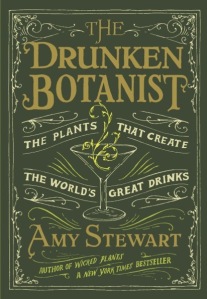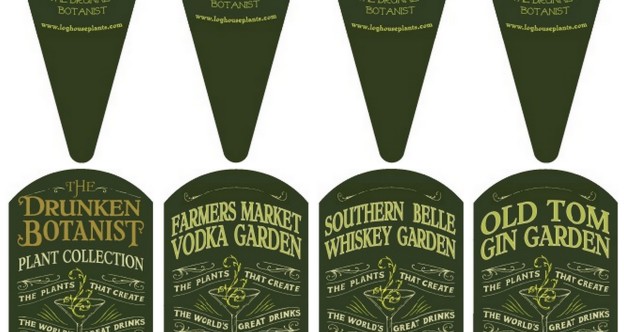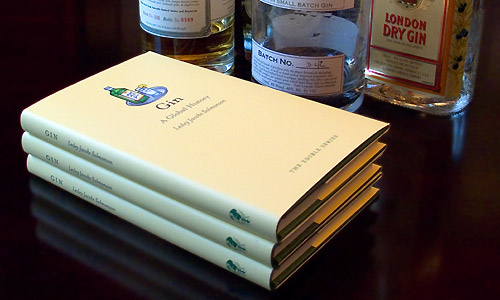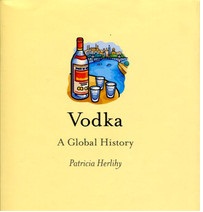by Susan Marque
Cooking shows have replaced soap operas, and chefs have become celebrities. Perhaps the next big thing will be a  game show with spirits. If that were to happen, then The Drunken Botanist: The Plants That Create the World’s Great Drinks, would be the contestants’ bible.
game show with spirits. If that were to happen, then The Drunken Botanist: The Plants That Create the World’s Great Drinks, would be the contestants’ bible.
Amy Stewart, author of the New York Times bestseller, Wicked Plants, has turned her fun-filled horticultural knowledge on what is inside your barkeeper’s bottles. You might never look at a Manhattan or martini the same way again.
“Warning: Do Not Add Water” the author warns on page 59:
During Prohibition, enterprising California grape growers kept themselves in business by selling ‘fruit bricks’- blocks of dried, compressed grapes that were packaged with wine-making yeast. A label warned purchasers not to dissolve the fruit brick in warm water and add the yeast packet, as this would result in fermentation and the creation of alcohol, which was illegal.
This is just one of the antidotes Stewart has sprinkled into the text, as she highlights each of the herbs, fruits and plants that make up spirits, highlighting their history and horticultural makeup. Grape wine, she informs the reader, almost never came to be: “The fossil record shows that grapes were established in Asia, Europe, and the Americas fifty million years ago. But when the last ice age, the Pleistocene epoch, began about 2.5 million years ago, vast sheets of ice covered much of the grape’s range and nearly drove it to extinction.”
Stewart showcases the perfectly intertwining realms of botany, booze and history with engaging tales (George Washington’s farm “was one of the largest distilleries in the country, producing over ten thousand gallons of alcohol in a single year”) to recipes (for a twist—no pun intended—on the original Manhattan, she suggests: “replace the rye with Scotch and you’ve got a Rob Roy; replace the vermouth with Benedictine and you’ve got a Monte Carlo; or just swap sweet vermouth for dry, and garnish with a lemon twist to make a Dry Manhattan.”) She has included over sixty recipes along with botanical illustrations and cleverly placed antidotes that break up the text.
It’s no surprise that Stewart is a National Endowment for the Arts fellowship recipient. The Drunken Botanist is a well-researched and curated portrait of alcohol and the plants that create it, shared with a lighthearted voice to make the historical facts inviting. You don’t need to be a drinker to enjoy it, perhaps just lover of life.
The Drunken Botanist: The Plants That Create the World’s Great Drinks will be published by Algonquin books on March 19th.
Susan Marque is an M.F.A. student in creative writing at The New School. Her work has appeared in the NBCC awards website, The Brooklyn Rail, Petside.com, Gotham magazine, The Resident Magazine, Yogi Times and Fit Parent.



